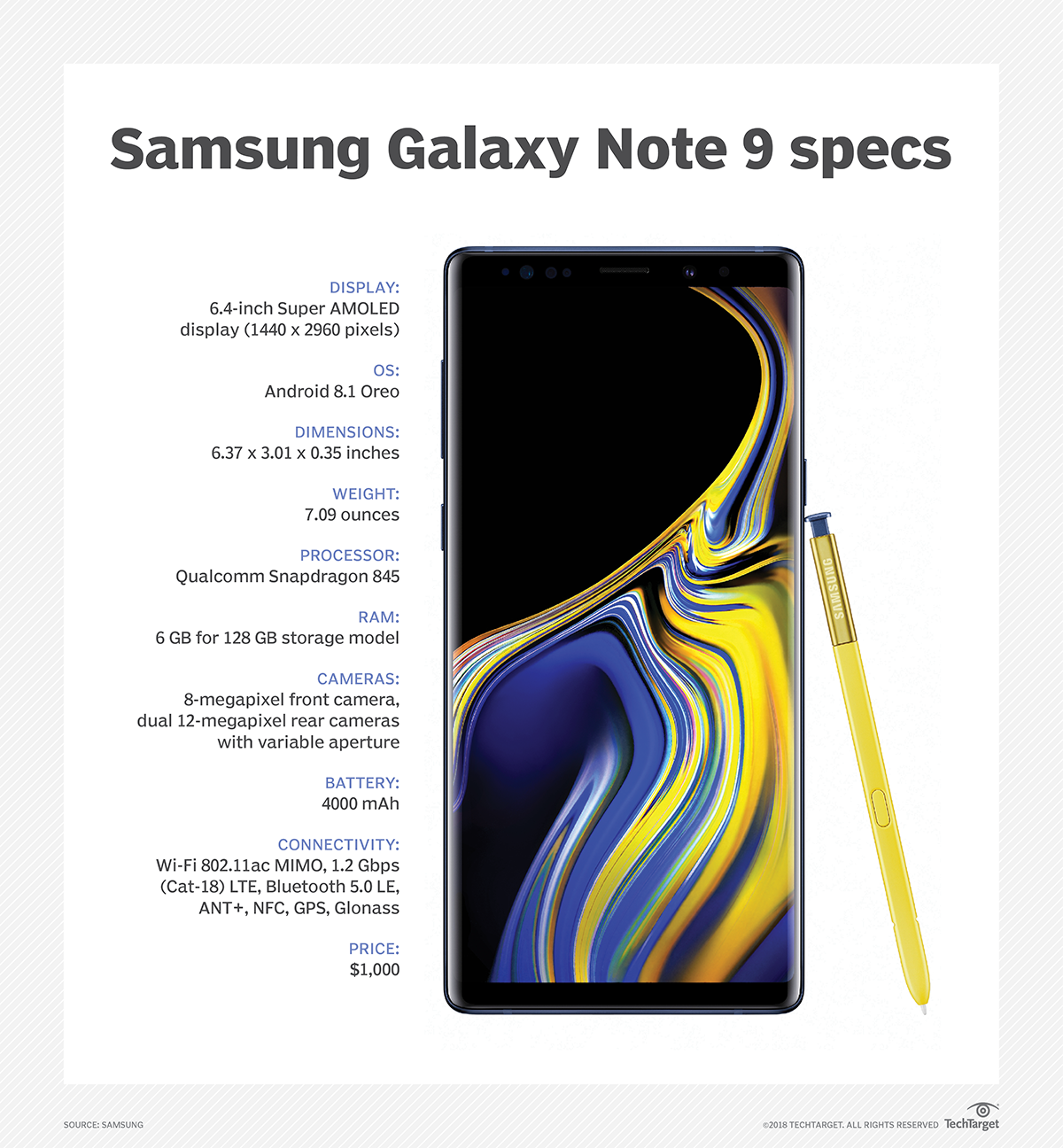Access
- Editor's LetterGet to know the device-as-a-service trend
- Cover storyEssential desktop troubleshooting tools for every IT pro
- InfoGraphicSamsung Galaxy Note 9 improvements are small but powerful
- FeatureWhat mobile thin clients offer and why to consider them
- ColumnWhy you don't always need a general-purpose operating system
- ColumnWhat mobile device analytics can do for you
Samsung Galaxy Note 9 improvements are small but powerful
Samsung's newest smartphone, the Note 9, is similar to the Note 8 at first glance. But there are improvements under the hood, so learn about what sets it apart in this overview.The Samsung Galaxy Note 9 appears nearly identical to its predecessor, but the devil is in the details.
The Samsung Galaxy Note 9, available in August, boasts the largest screen of any smartphone -- specifically, a 6.4 inch display -- which could be clumsy or convenient, depending on the user. But users already familiar with the Galaxy Note 8 6.3-inch display likely won't notice much difference. Samsung moved the fingerprint scanner from next to the camera to beneath it in an attempt to boost user experience.
Although the new smartphone was announced directly after Google's release of Android 9.0 Pie, the Samsung Galaxy Note 9 still ships with Android 8.1 -- an older version that is practically indistinguishable from the Galaxy S9's OS.
Enterprise-ready features
Samsung wants to corner the market of creative professionals and entrepreneurs with an enterprise-ready device. To do so, the Samsung Galaxy Note 9 is fully compatible with the company's DeX docking system. Users can connect the Note 9 to a monitor with an HDMI cable for a full desktop experience, and they can still use the device to send texts, browse the web and complete an array of other tasks.
Samsung also improved the S Pen for the Samsung Galaxy Note 9, which now includes Bluetooth LE (Low Energy) so users can launch apps or flip through Microsoft PowerPoint slides without physically touching the device. With 40 seconds of charging, the S Pen can hold a 30-minute charge, and it also now offers increased pressure sensitivity.
Behind-the-scenes features
Perhaps the most significant improvements to the Note, however, are under the hood. The new Note 9 runs Qualcomm's powerful processing chip Snapdragon 845, features an all-day battery and has up to 512 GB of internal storage, with the ability to add an SD card to receive 1 TB total.
The new smartphone also includes an improved version of Bixby, Samsung's AI platform, to compete with Amazon Alexa and Apple Siri. Samsung aims to make Bixby more conversational and personal by remembering user preferences and using natural language. For example, users can ask the personal assistant about events in Brooklyn over Labor Day weekend, then follow up with 'What about the first weekend in October?' and the system will understand the context.
Many organizations, however, might not consider these improvements worth the steep price tag. The Note 9 starts at $1,000, which is comparable to Apple's iPhone X but is a substantial increase from the Note 8, which started at $750.
